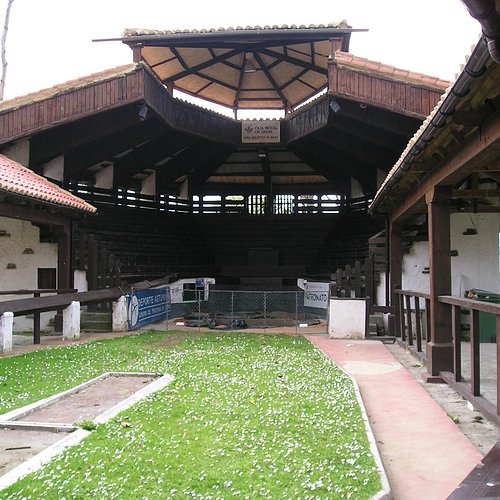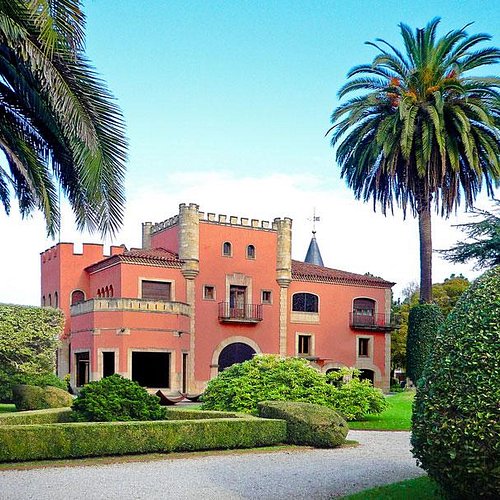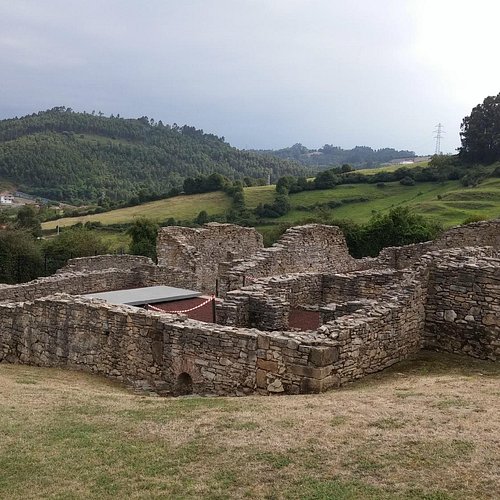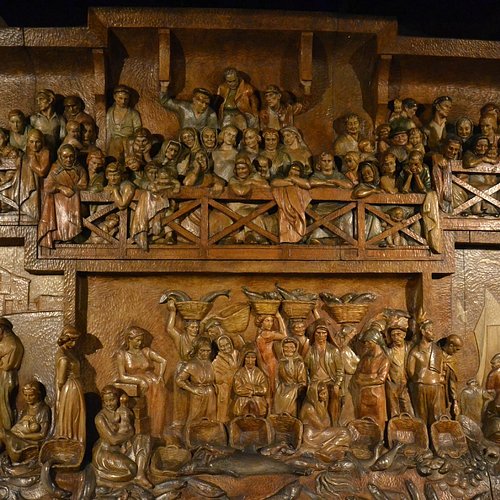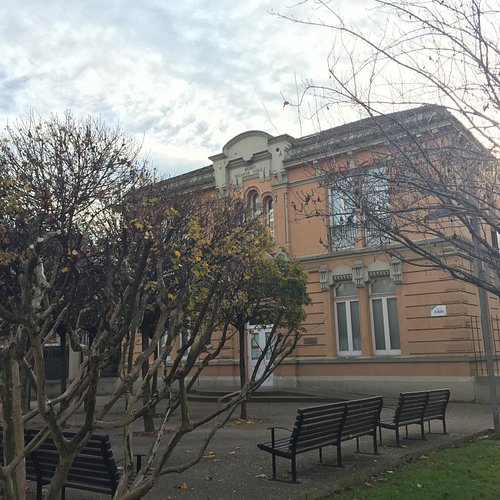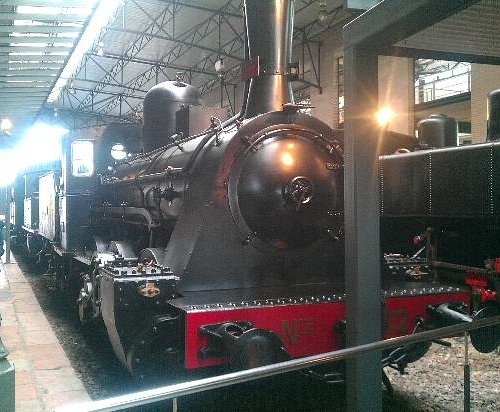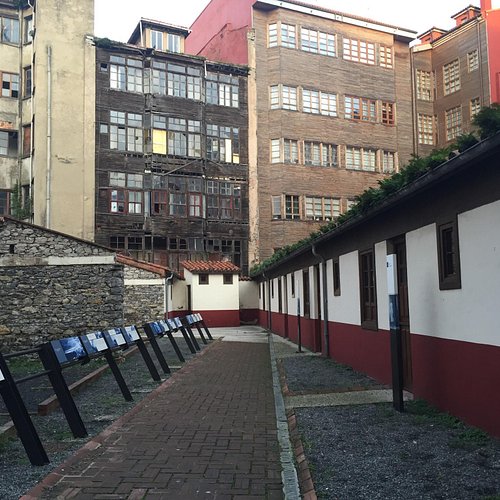What to do and see in Gijon, Asturias: The Best Specialty Museums
This port city of about 275,000 on Spain’s north coast began 3,000 years ago as a fishing village. Today it’s a departure point for regional cruises, making it busy in summer (and making us wonder what those ancient fisherman would have thought of cruise ships). The original village, Cimadevilla, with its narrow, cobblestone streets, draws many tourists, and Cerro de Santa Catalina park at the tip of Cimadevilla’s peninsula provides great coastal views.
Restaurants in Gijon
1. Museu del Pueblu d'Asturies
2. Fundacion Museo Evaristo Valle
3. Villa Romana de Veranes
4. Museo Casa Natal de Jovellanos
5. Museo Nicanor Pinole
6. Museo del Ferrocarril
Overall Ratings
4.0 based on 348 reviews
Reviewed By jennysC7738KA
Rail Museum of Gijon, Asturias, Northern Spain Some may have seen the Guardian article on the FEVE metre gauge railway which travels across the north coast. This railway has its roots in the industrial history of this part of Northern Spain. To add to the experience the rail museum of Gijon needs to be added to the experience. The full name is Museo del Ferrocarrill de Asturias on Avenida de Juan Carlos I, Gijon. It is set in the original Gijon station and is close to the current railway station and ALSA bus station. We visited on the 2nd January 2019. I discovered the museum while looking at the Gijon website for something to do in the morning before we headed to Santander. This stunning museum has something for everyone, steam, diesel and electric. Both above ground and items that would have been used in the mines. The area has a rich mining and industrial heritage which may not be so apparent to modern visitors. The museum has permanent exhibitions of both the cased museum items and of rolling stock. What struck me was the diversity of the collection. From the bonds that financed the railways to the engineers that worked and built the lines. The collection of staff photographs and train staff hats bring what can often be portrayed in a very cold manner to be a great exhibit. If anyone is thinking of a career in the railways this is an excellent training exhibit. Everything from the different grades and profiles of the rails to the three main stages in carriage evolution. There are various track gauges on show from 2ft to what looks like 5 ft. With 600mm (2 ft) and 1 metre (39 inch) being the two most common. This museum has something for the child and the adult. It is laid out very well. The outside exhibits are each clearly labelled with their manufacturer, their gauge, weight and where they were used and their state of preservation, especially where an item is in full working order. The collection of ‘tank’ engines and their later equivalent of diesel and electric is true European collection with items from the UK, Belgium, France and of course Spain. We often forget that many nations built their own rolling stock to match the very specific the needs of their working location. I was told by one of the senior members of staff that this is the best in Spain with the possible exception of Barcelona. But for me this is one of the best in the world. So often it is the express trains and their carriages and their speed which makes the news but it was these small lines, working in hard conditions which actually made the industrial success of many industrialised nations and this museum shows this to the very best effect. The little trains of Wales are running reminders of this history in Wales but there is nothing there as a collection that matches of the industrial nature of this collection. I didn’t take may photographs because really you have to see this collection as a whole. Set right by the beach and very close to the centre of the town. The city is a big one and has all that you would expect. Underground parking is available near the Mercado (main market). Take time to visit this collection it took us around 2 hours and we had limited time as we had a ferry to catch. But we will be back. This is a collection that needs to be seen and the staff rewarded for their conservation efforts. There are items here that are laid out such as point levers which barely get a mention but the diversity here is what is to be applauded. The signals and telegraph side are not forgotten and a control board showing all the station layouts - operated as a plug board was also lovely to see. So often these get thrown away as new technology moves in. A serious collection for the enthusiast, laid out in a manner which will interest everyone and is explained very well. As I said earlier this makes a very good training collection - I don’t know if it was used as such but certainly I could see school groups making good use of this collection. The town has more than a dozen museums so the concept of learning and history are well steeped in this location. Most exhibits are in Spanish but a separate booklet in English is provided as part of your admission charge. Well done to the staff there. I have been a steam buff for many years and am used to seeing the history of a particular railway laid out out in small museums on each preserved lines. This takes it to the next level. This museum is not of the same size as the National Rail Museum at York, UK. But the quality and range of its exhibits really match it. And as it specialises in the industrial history of the Asturias province - the under sung rail heroes of the past, it is to be applauded. everyone from an industrial society has something to learn from this museum. We all had rail heritages like this but as always people and carrying them and hiding the grubby nature of industry in what has now become a tourist attraction has for many places pushed the real history into the background. Not here, its at the centre of what this province was all about. Well preserved. Entry fee is less than 4 euros, seniors are free. It holds many special events especially during the holidays so take some time to visit this very special place and relive and be proud the industrial heritage we would all have had but is less visible in many places. By the way the mountains of Asturias are spectacular also. So Asturias has so much to offer.

